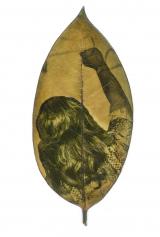
As part of her accompaniment in Colombia, artist Gabrielle Turbide had the opportunity to carry out two experimental photography workshops with the Sovereign and Community Process for Life, Justice and Peace in the municipality of Morales, in Micoahumado, and with the Colectiva Agroecológica la Matera, a space for urban appropriation located in the Manrique district of the municipality of Medellín.
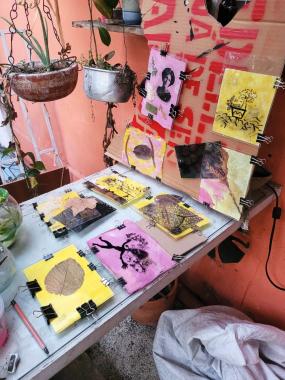
The two techniques used, anthotype and chlorotype, require only plant pigments and a light source, making it possible to generate entirely natural prints. While anthotype involves creating images using a photosensitive emulsion extracted from petals, fruit or leaves, chlorotype enables an image to be printed directly onto a plant leaf thanks to the breakdown of chlorophyll. In both cases, the images are organic, ephemeral, sensitive to their environment and therefore in constant transformation.
The 20 or so participants, of all ages, had the opportunity to learn using local plants such as plantain, cocoa, orange, lemon and pomegranate. In the case of Matera, the leaves were harvested directly from their community garden. Turmeric and beet, as well as the alcohol-based diluent used for the anthotype, also came from their own harvests. In Micoahumado, the leaves were picked on a farm close to the village.
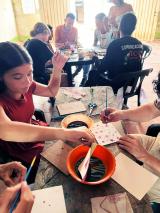
This privileged moment enabled enriching exchanges and a mutual sharing of knowledge with the two communities, in relation to their various processes of struggle and resistance. At the Micoahumado workshop, for example, one of the participants printed the acronym TECAM (Territorios Campesinos Agroalimentarios) on the anthotype. The latter is a territorial figure of the Coordinador Nacional Agrario (CNA) which aims to recognize certain peasant territories in order to value their knowledge, traditions and historical agricultural practices, essential to their food sovereignty. The recognition of Micoahumado as a TECAM, scheduled for November 29, will mark an important step in the community's territorial recognition. Micoahumado has become a symbol of resistance to the armed conflict that has persisted in the region for over forty years.
La Matera, for its part, is a Medellín-based collective that shares and democratizes ancestral knowledge of medicinal, condimentary and aromatic plants, enabling the community to become more united and connected to nature. Every Thursday, neighbors and friends gather to learn how to care for plants, embroider, knit and even work in the neighborhood's green spaces.
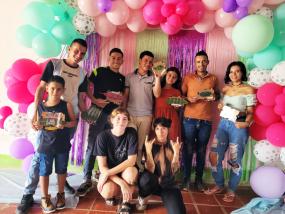
Photographs taken during the passage of the Caravan for Peace, Life and Territorial Permanence 2024 in the Micoahumado region were also printed on sheets during the workshop. These illustrate various cultural and artistic encounters, such as traditional dances and commemorative ceremonies.
Some of these chlorotypes, produced jointly by artists Nana and Gabrielle Turbide, will be presented at the MIRAR experimental photography exhibition, scheduled to launch the final report of the Caravan for Peace, Life and Territorial Permanence in Bogotá in December. The artistic exhibition seeks to immortalize the caravan, through the chlorotype, as an embryo of collective resistance. It also highlights the human rights issues and violations in the six regions crossed by the caravan in 2024: Antioquia, Sur de Bolívar, Arauca, Chocó, Valle del Cauca and Cauca.
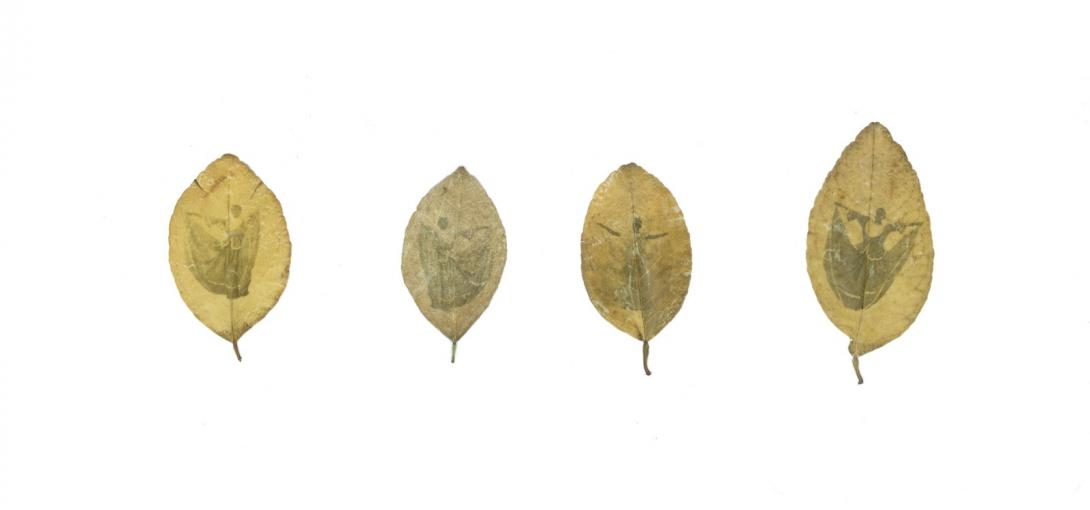
Above, chlorotypes on lime leaf of young dancers during the visit of the Humanitarian Caravan for Peace, Life and Territorial Permanence, 2024 to Micoahumado. The results of the prints were shared with the young dancers at the workshop.